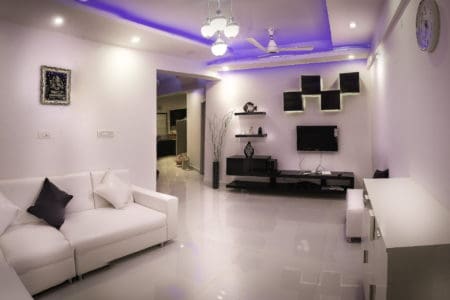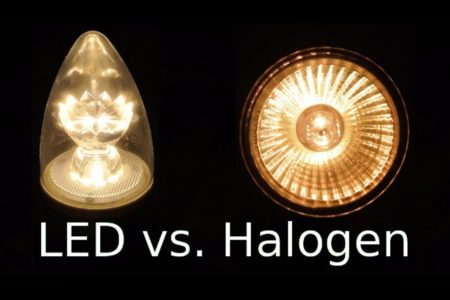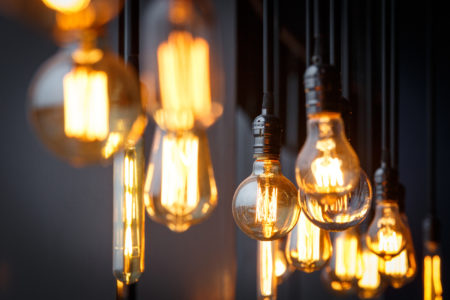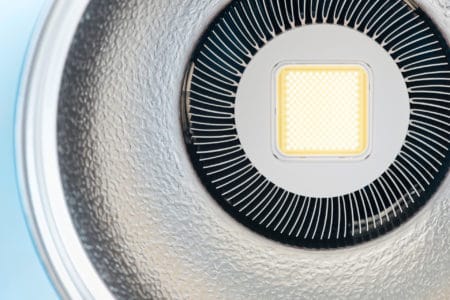When buying light bulbs, most of us look at the wattage first. But when switching to LED the lumens specification is far more important. Many spotlights or flood lamps for construction sites come with 500W halogen bulbs. If you look for a LED replacement you need to find out the equivalent lumens. In this article you will find out how many lumens a 500W halogen bulb has to find a good replacement.
How many lumens does a 500W halogen bulb produce?
Today the wattage is no longer the important factor to determine the brightness of a light bulb. You can now get a light bulb with a low wattage that is as bright as a bulb with higher wattage. You can get a light bulb that will shine as bright as a 60W halogen but using only 8W of electricity thanks to LED technology. When you shop for light bulbs, you need to compare their lumens value instead of watts like in the earlier days.
500W halogen bulbs are widely used in spotlights and flood lamps on construction sites or in the yard. Let’s find out how many lumens a 500W halogen bulb produces:
- Minimum: 500W x 16 lm/W = 8,000 lumens
- Maximum: 500W x 21 lm/W = 10.500 lumens
The lumen output of 500W halogen ranges from approximately 8,000 to 10,500 lumens. The range comes from different halogen efficiencies. So on average a 500W halogen bulb produces approximately 9,200 lumens.
Halogen bulbs produce more lumens per watt than their standard incandescent counterparts. This is why they are a very popular lighting solution. But today you should choose spotlights with LED technology which offer a way better efficiency than all the old lighting technologies.
What is a lumen?
We use lumen to measure the amount of brightness of a light bulb or how much light you are getting from a bulb. If the number of lumens is high, then you have a very bright bulb, brighter than a bulb with fewer lumens.
Lumen levels for bulbs in your home may wary widely. Even if the bulbs have the same wattage, the lumens may differ for different types of light bulbs. Low energy bulbs may give more lumens even if the wattage is low.
How to convert watts to lumens?
Bulbs convert electricity (watts) into light (lumens). If you want to convert watts into lumens for a halogen bulb, you simply need to know the efficacy of the bulb and you can arrive at a figure by a simple calculation. Efficacy is the number of lumens generated per watt of the used power. If you convert watts to lumens, you determine the brightness of the bulb. A high efficacy means a bulb will produce more light at a specific wattage.
Here is the formula for determining the number of lumens produced by a bulb:
For a halogen bulb, the efficacy rating is from 16 to 21 lm/watt (lumens/watt). They have an average efficacy rating of 18.4 lm/watt. We take the average because of the fluctuation in the rating with the heat produced by the bulb. The bulb’s efficacy is affected.
Applications of Halogen lights
Halogen lights can be used in both indoor and outdoor areas. Here are some applications of halogen lights.
Battery-powered lamps
Halogen lights can be a great light source if you are remodeling your house. Portable halogen flood lights can give you very bright lights. A 500W halogen lamp can give you an output with very high lumens. It is very suitable for this purpose since they are lightweight, portable and very bright.
Workshop of garage lighting
You can use your halogen light for your garage. It is essential for safety. It is good to use battery-powered, wireless halogen lights since it eliminates power cables. This enables one to move the lights to different places easily.
As a heat lamp
Because of the large amount of heat it produces, halogen lights can be applied as a heat lamp. It is ideal for heating different types of outdoor areas like patios and terraces. Most outdoor heaters use halogen lamps within the heaters because of the brightness and high-intensity heat the lamp produces. It can also be used for incubators.
Halogen floodlight
A 500W halogen flood light can be mounted for outdoor lighting. You can set it up to light up your driveway or backyard. Good illumination outdoors also improves your home security.
Limitations of 500W Halogen lights
500W halogen lights are not expensive, but they have disadvantages.
High electricity costs
A 500W halogen bulb consumes a lot of energy. When using multiple 500W lights the energy costs will go through the roof. Most of the energy consumed by halogen bulbs are used to produce high temperature to heat the filament that produces light. So most of the energy is wasted as heat loss.
This problem can be solved by getting an LED halogen replacement. If you get a 100W LED, it can produce at least the same number of lumens than a 500W halogen. Your cost of electricity is reduced by a fifth of the original value.
Low life span
Halogen bulbs have a short lifespan. It ranges from 1,000 to 2,000 hours only. If you use your halogen bulbs for 8 hours a day, you will need to change them within 4 to 8 months. And if the ambient temperature is high, you might need to replace your bulb earlier.
But if you replace your 500W halogen with LED, you get a light that has a longer lifespan of 10,000 to 50,000 hours. LED may be more expensive than halogen on purchase but you can save more on electricity and replacement costs in the long run.
The Lighting Facts Label
Today, you can find new product labels for light bulbs. This is done to help consumers better understand the switch from watts to lumens. This label can help people buy the right kind of light bulb for their needs.
This label includes the following information: brightness or number of lumens, estimated yearly energy cost, lifespan, and light appearance or color temperature from warm to cool.
Conclusion
A 500W halogen bulb produces around 9,200 lumens. This figure is very useful if you plan to replace your old halogen bulbs with more energy efficient lighting. As long as you get an energy-efficient bulb replacement that produces approximately 9,000 lumens, then you get the benefit of having a light with the same brightness that gives you more energy savings.






